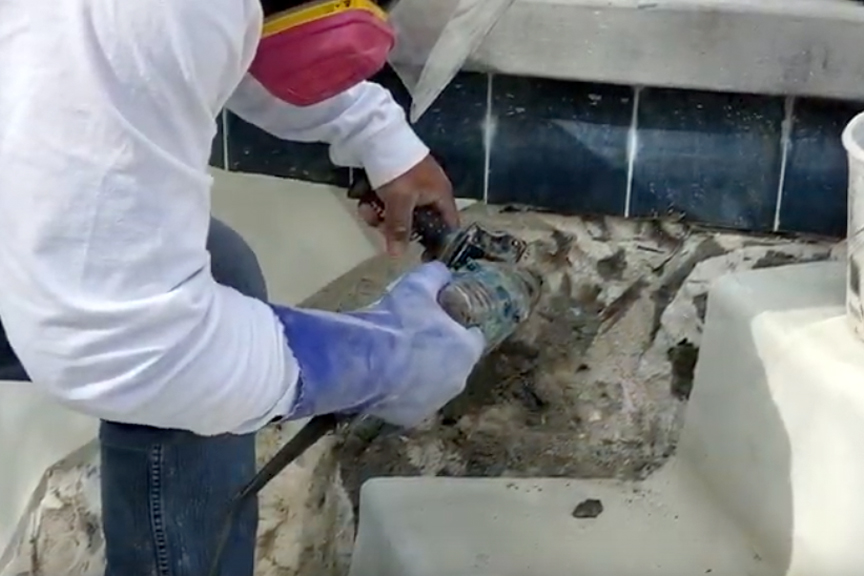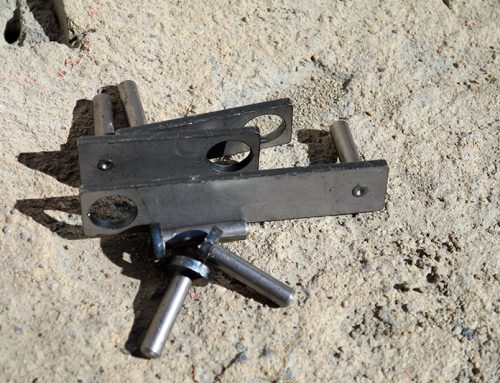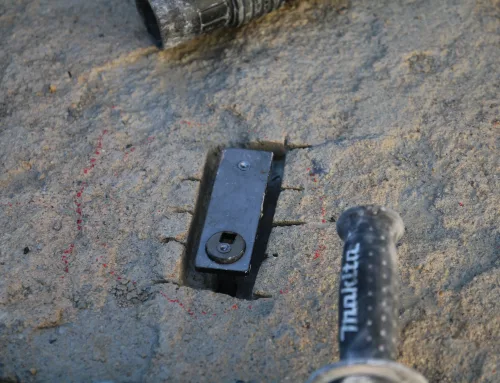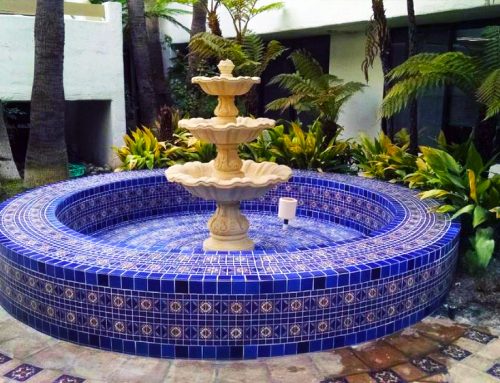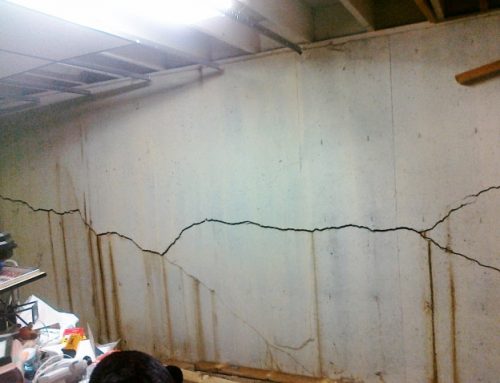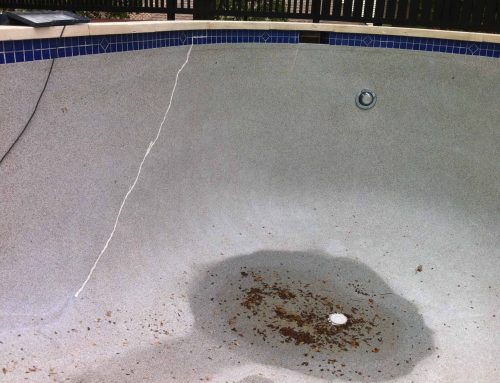On this pool with structural cracking, we’re on site seeing where this pool suffered from structural cracking. The pool isn’t that old, but being in California, ground movement can be a reason why pools crack – but that doesn’t mean they have to leak. With a proper repair job, pools can have decades of pleasurable use without leaking or suffering the cost of water loss.
We began the job by performing a thorough leak detection on the entire pool, including the structural cracking with our Pro Complete Leak Detection Kit from LeakTronics. We found the precise areas with the offending leak and planned what repairs would solve the problem. we made a bid for repair when we submitted our leak detection findings and ultimately, we got the job.
When we started the leak detection, we looked at the equipment that made the pool tick, after all, this wasn’t a call about a structural crack, it was a call to find the water loss. Knowing what equipment makes the pool run is as important as looking at the shell. Everything that touches water has the potential to leak, and parts in the pool that might leak are in contact with that equipment. Knowing what drives it is important.
Then we walked the pool, looking for anything that was previously repaired, taking note of return fittings, skimmers, lights, drains, side suctions, tile lines – all the areas where a leak can occur. We’ll be using our PoolScope to listen to all of that areas for the sounds made by water escaping the pool. During our walk around, we immediately noticed a structural crack running down the stairs that entered the pool.
In the video, you will see us approaching the sound of a leak using our SM-1 Side Mic by LeakTronics. The sound was coming from the structural crack, and as we got closer to it, the sound got increasingly louder. This was clearly where the water loss was taking place, but to be sure – we do a complete and proper leak detection to accurately identify that other areas are, or aren’t leaking. This includes static testing the lines to be sure there isn’t a leak further into a line that we can’t hear from where the pipe enters the pool. All areas get checked.
When we heard the leak at the structural crack, we used dye to back up our findings. This was a second step to be incredibly accurate, as to reduce invasive repair work that doesn’t need to happen. We repair the leak where it is, the cracks where they run and we don’t do more damage than necessary to get the job done right. After all, time and materials cost money. Don’t do unnecessary work – be precise.
We drained the pool and misted and mapped the crack to define the full extent of where it ran. then we cut a wide channel around the area. This allows us to cut and install the staples properly; and being a corner area on the stairs, this gives us room to do the job right without mistakes. During this process, we discovered that this crack had been worked on previously with a failed attempt at repair. We’re going to fix that.
With the staples installed, we cover the area with hydraulic cement and use membrane C to waterproof the are of repair as a second abrrier of defense against potential water loss. When the plaster patch is applied, the pool is ready for refilling and years of enjoyment.
All work provided by CalTechPools.com

